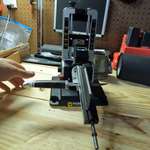
We all have our darlings. You know, those cartridges that our fathers, uncles, grandfathers and heroes have used, and have been written about for decades. But what about some of the former greats that seem to have been forgotten? Someone must champion the unsung heroes. I volunteer to be that someone.
While the .30-’06, .270 Win. and .375 H&H Mag. are favorites, I have a flair for the obscure or obsolete—those cartridges that perform well but are becoming increasingly rare. Here’s my list of the top five most underratedcartridges.
.30/40 Krag
America’s love affair with .30-caliber cartridges started right here, with the Krag. Until the Aught-Six tackled the shooting world, the Krag wore the .30-caliber crown. What few shooters realize is the Krag still makes for a great hunting rifle. Its performance falls smack in the middle of the 30/30 Win. and the .30-’06, and that’s not a bad place to be. It makes a great choice as an all-around North American rifle cartridge and is perfect for African plains game. Plus, it comes in the uber-cool Winchester 1895 lever-action and Ruger No. 3 falling-block, so you can be doubly stylish.
.257 Roberts
Necking the 7x57mm Mauser down to hold .257-inch-diameter bullets was a fine idea, and it produced one of the most useable quarter-bore rifles around. Velocities are better than the .250-3000Savage, yet not quite as hot as the .25-06 Remington or .257Weatherby, giving shooters a cartridge that will perform well with standard cup-and-core bullets but still deliver the flat trajectories we like. The “Bob,” as its aficionados refer to it, is a light-recoiling option that is just about perfect for deer and antelope anywhere. The fact that the Winchester Model 70 and Ruger Model 77 both have models chambered for it is just a bonus.
6.5x55mm Swedish Mauser
To me, there is something magical about 6.5mm bullets. Long and lean, with a high ballistic coefficient that rivals a .30-caliber bullet’s wind-bucking ability, they are the stuff of legend. From Scandinavia to South Africa, many hunters have relied on the 6.5s. The Swede dates back to the late 19th century, and the moderate velocity of that time period is part of the successful equation. I like the 160-grain round-nose bullets at around 2,400 fps (an almost magical velocity when it comes to bullet performance), as they will handle both deer and black bear here in my native New York quite well. Look long and hard at the Norma Oryx 156-grain load at 2,560 fps, which will handle everything up to moose and elk.

9.3x62mm Mauser
Metric cartridges have long perplexed American shooters, but this one needs to be considered. The 9.3s shoot .366-inch-diameter bullets, and shoot them well. The 9.3x62 has a case based on the .30-'06, and it is to the .366 bore what the .35 Whelen is to the .35 bore. But, unlike the Whelen, the 9.3x62 shoots 286- and 300-grain bullets to speeds adequate for all game, save Cape buffalo and elephant, and in some African countries it is legal for those as well. The lighter 250-grain bullets make a superb choice for elk and moose, as well as bears and hogs. Oh, and all this performance comes in a standard long-action rifle.
.218 Bee
Finishing up with the smallest of the lot, the .218 Bee is a rimmed varmint cartridge that was originally chambered in the Winchester Model 65 lever gun and suffered from a lack of accuracy in that rifle. That accuracy problem didn't show itself in the Ruger No. 1 that I carried for a couple of years as 3/4-inch groups at 100 yards weren't a problem, recoil was nearly nonexistent, and the report was a pleasure compared to my .22-250. The Bee will push 45-grain pills to 2,700 fps, and that makes it a perfect varmint rifle out to 250 yards. The Bee runs on very little powder and does the job well, though the coyotes weren't big fans!
If you're after something a bit different, that will still be totally useful, give these cartridges a look, and have some fun!




































